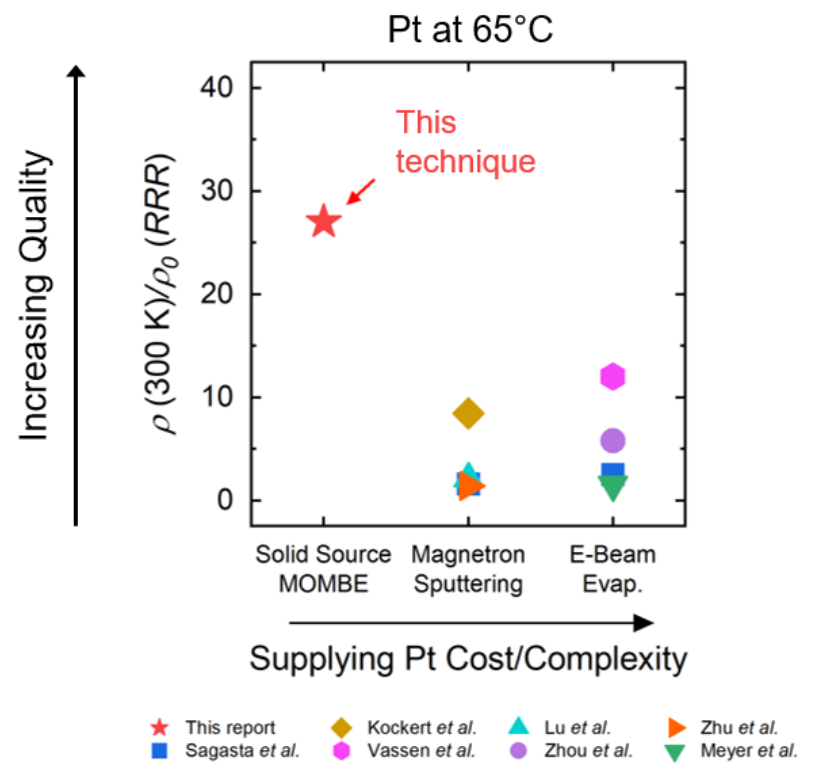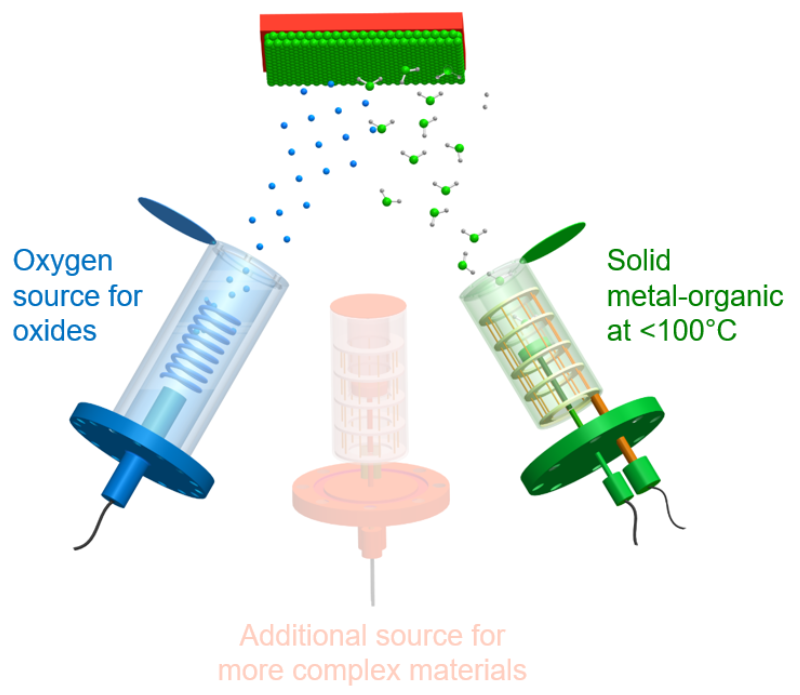Low-energy platinum coatings
A method for low temperature thin-film deposition of high melting point metals, like Pt, and their oxides.


Applications
- Thin-film deposition for catalysts, fuel cells, temperature sensors, electronics
Key Benefits & Differentiators
- Reduced cost: equipment and labor
- Low temperature: reduce from >2000°C to <100°C
- Wider material choice including metal-oxides
- High degree of control for complex metal-oxides
Technology Overview
Thin-film deposition is a fundamental step in the fabrication of components for optics, electronics, packaging, and other applications, and is expected to reach a market size of $22 billion by 2022. Currently, the method of choice to evaporate refractory and noble metals is electron-beam physical vapor deposition (EBPVD). EBPVD involves bombardment of a target with an accelerated electron beam in high vacuum to evaporate or sublime the elemental metal of interest, which is then deposited onto a surface. Despite its ability to vaporize metals that require >2000°C, EBPVD technique is expensive. Furthermore, to obtain metal-oxide depositions, oxygen must be introduced into the chamber, which can compromise the equipment and materials and therefore the quality of deposition.
Prof. Bharat Jalan’s research group at the University of Minnesota have developed a method that allows thin-film deposition of refractory or noble metals or their metal-oxides at much lower temperatures than current methods such as EBPVD. Additionally, a method for the production of thin-films of predetermined oxidized refractory metals similar to metal-organic chemical vapor deposition has been developed. The device includes a vacuum chamber containing an evaporation source (such as an effusion cell) enabling refractory metal thin-film deposition at low temperature using solid metal-organic substances. The potential application is the use of this system to deposit thin films of refractory metals such as platinum, iridium and ruthenium, as well as metal-oxides at the desired oxidation states in a controlled manner. The advantages of the technology are the reduced cost and the low temperature operation for thin film production compared to the current methods.
Phase of Development
TRL: 3-4Working prototype. Researchers have demonstrated the growth of platinum and RuO2 films at source T < 100°C, which typically requires >2500°C using conventional techniques.
Desired Partnerships
This technology is now available for:- License
- Sponsored research
- Co-development
Please contact our office to share your business’ needs and learn more.
Researchers
- Bharat Jalan, PhD, Associate Professor, Chemical Engineering and Materials Science
-
expand_more library_books References (2)
- Bharat Jalan, et al , “Novel Synthesis Approach for “Stubborn” Metals and Metal Oxides”
- Nunn, William, Sreejith Nair, Hwanhui Yun, Anusha Kamath Manjeshwar, Anil Rajapitamahuni, Dooyong Lee, K. Andre Mkhoyan, and Bharat Jalan , Solid-source metal–organic molecular beam epitaxy of epitaxial RuO2
-
expand_more cloud_download Supporting documents (1)Product brochureLow-energy platinum coatings.pdf